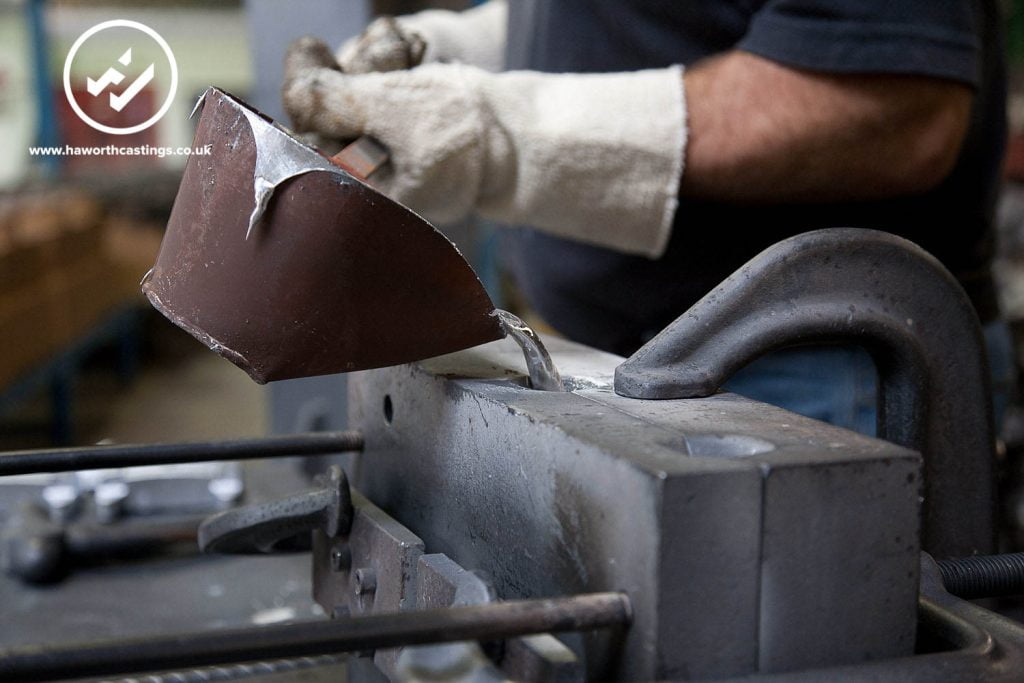Published - 28th Mar 2017
Temperature control and the pouring process are both important elements in metal casting. In this blog, we will be examining each of these in turn.

During the casting process, the metal is brought up to the required melting temperature in our foundry furnace before being poured into the mould. This temperature is dependent on the choice of metal and on the required density of the casting – since heat dissipates faster in thinner castings.
Aluminium alloys are used in most of our casting work and this metal has a melting temperature of 660°C. We heat the metal to a higher temperature than this to allow for a small amount of heat loss as the molten metal is transferred from the furnace into the mould. The temperature is monitored using a pyrometer and the furnace controls.
Keeping the temperature at a constant level during the pour is vital to ensure the integrity of the finished product. If the molten metal is too hot, this will alter the chemical and physical properties and the casting will not meet the required specifications. If the temperature is too low, the molten metal will not flow into all the cavities and apertures of the casting due to solidification. So, the temperature is monitored carefully.
We use two methods for the pouring process – either by ladle or by crane. This choice is determined by the size of the casting.
The density of the casting is an important consideration in the pouring process. For thin castings, the pour will need to be carried out faster than for thicker castings so that the molten metal does not chill.
However, there are also some general principles that apply to all castings. If the pour is carried out too slowly, the molten metal will not reach all the internal cavities and edges due to a lack of pressure and solidification. However, if the metal is poured too quickly, turbulence may be introduced.
Turbulence involves irregular variations in the speed and direction of flow as the molten metal is conveyed through the mould. This problem can lead to indentations, where the liquid metal does not reach all parts of the mould cavity. This would cause casting defects.
The casting process therefore requires the skill and expertise of highly experienced foundry staff who can accurately judge the temperature and pouring rate required for each individual casting.
For further details about our sand or gravity-die casting work, please email sales@haworthcastings.co.uk or call +44 (0)1794 512685.
If you have a project, talk to our experienced sales team
Contact us